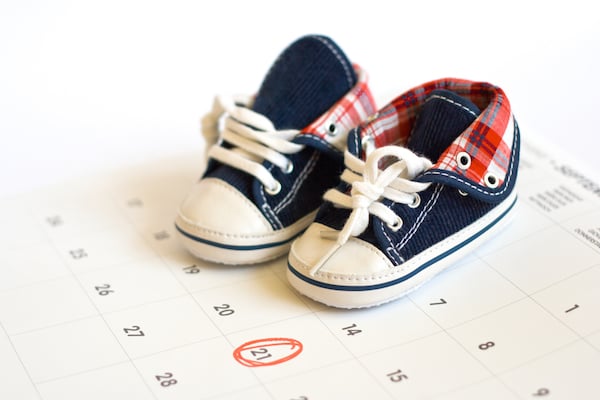You have just found out that you’re pregnant. First off, congratulations! What an exciting time. One of the first questions you likely have is "When will this new addition make an appearance?"

You know in general that the big day will come in about nine months ... or will it?
Keep in mind, any due date calculation is just a general estimation. All pregnancies are different and sometimes babies come before or after the expected due date. In fact, only about 5% of babies are born on their expected due date. There are a couple of ways to find out how long you need to wait for your little bundle of joy.
To figure your estimated due date, you will need to know the first day of your last period. For most women, a menstrual cycle is 28 days. If your cycle is not 28 days, some of these methods will be less accurate. It is important to stay in regular contact with a doctor throughout your pregnancy to ensure everything is moving along as it should.
3 Ways to Calculate Your Baby's Due Date
1. Online Calculator
One of the easiest ways to figure the due date is to find an online calculator. A simple search for, “Due date calculator” will bring up thousands of online options. You will just enter in a date or two, and the calculator will do all the work for you. Likely, the most accurate calculators will use the first day of your last period.
This is also the date your healthcare provider will want to know. You can also calculate your due date manually. Some online calculators will ask for the date of conception. Most women are not sure of the exact date of conception. If you do know the exact date of conception, look for a calculator that offers that option for determining the due date.
2. Manual Methods
Fertilization of an egg usually takes place about fourteen days after the first day of the last period, however, a pregnancy is measured from the last menstrual cycle rather than the fertilization date. With that in mind, here are a couple of ways you can manually determine your due date.
The first way to manually determine your due date is the calendar method. Grab a calendar and look up the first day of your last period as a starting point. Then, add 40 weeks to that day to find your expected due date.
The second manual way you can determine your due date is by using Naegele’s rule. This is a standard way of calculating due dates that has been around since the 1800s. Franz Karl Naegele was an obstetrician who came up with this rule. Basically, his rule is to add nine months and seven days to the date of the first day of the last period. The result would be approximately 280 days or 40 weeks. This method has some flaws because not all calendar months are the same length, and it does not account for leap years. This rule does not account for women who do not have a 28-day menstrual cycle.
3. Ultrasound
Your doctor can help you determine your due date with an ultrasound. Likely, when you call your doctor to tell her the good news, she will schedule an appointment a few weeks out to do this ultrasound. This method is most accurate within the first trimester of the pregnancy. There is some margin of error with this method, but it is generally considered accurate. Doctors use a combination of vaginal ultrasound and last menstrual cycle to determine estimated due dates.
Keep in mind, a due date is just an estimation. Babies will come when they are ready, not because of the date on the calendar. Keep in touch with your doctor and enjoy your pregnancy!
